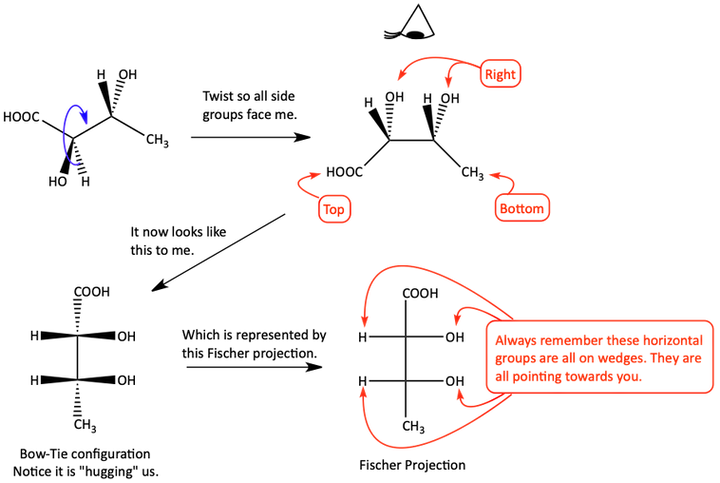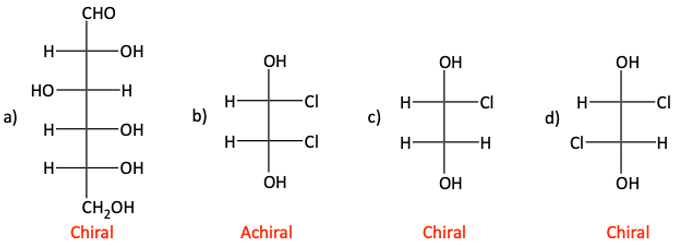Fischer Projections
Fischer Projections
When we are paying attention to stereochemistry, we need to pay attention to which direction groups are pointing. Wedges and dashes become important to us. It also makes for messy and tedious drawings at times. There is a simpler method that can be used to draw three-dimensional drawings in a two-dimensional manner. In order to draw a Fischer projection, the molecule is twisted so all of the horizontal bonds come towards the observer. When the Fischer projection is drawn, the vertical lines are all in the plane of the page or pointing away from us. The horizontal lines represent groups that are coming towards us. One way to think about it is every set of arms on a Fischer projection are pointing towards us as if they want to hug us.

Fischer projections are commonly used in biology and biochemistry to represent sugars and carbohydrates. For example, here are the Fischer projections for two common sugars.

Fischer projections of D-glucose and D-galactose
Fischer projections are helpful in determining if a compound is chiral or not. They make finding mirror planes (sigma planes) much easier. If a mirror plane is found in a molecule, it is achiral.

Chiral and achiral Fischer projections
5. Are the following molecules chiral or achiral?
a)
b)
c)
d)




(R) and (S) in Fischer Projections
If a carbon atom in a Fischer projection has four different groups on it, that carbon atom is a stereocenter and can thus be given an (R) or (S) designation. When assigning an (R) or (S) designation, we must remember that if the lowest priority group (4) is on a horizontal line, that is a wedge. That group is coming towards us. For the (R) or (S) designation, 4 needs to be in the back. The simplest way to work this problem is to draw the arrow from 1 to 2 to 3, and then reverse the arrow to get our (R) or (S) designation.

R and S of Fischer Projections
This compound is called (2S,3R)-2-bromo-3-chloropentane.
6. Identify each of the stereocenters of D-glucose as R or S. The * indicates the stereocenters.

Answers
5.

6.

